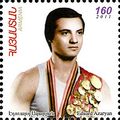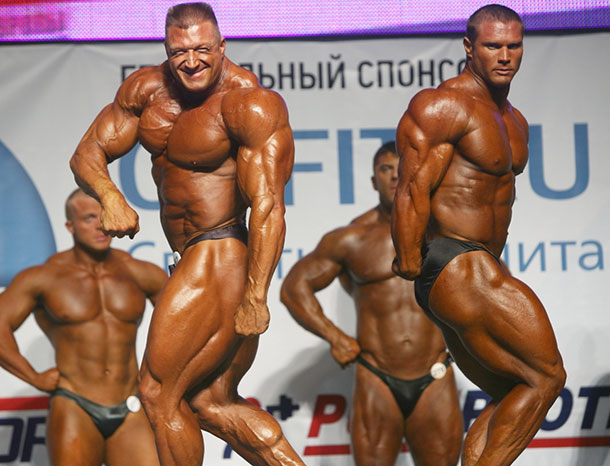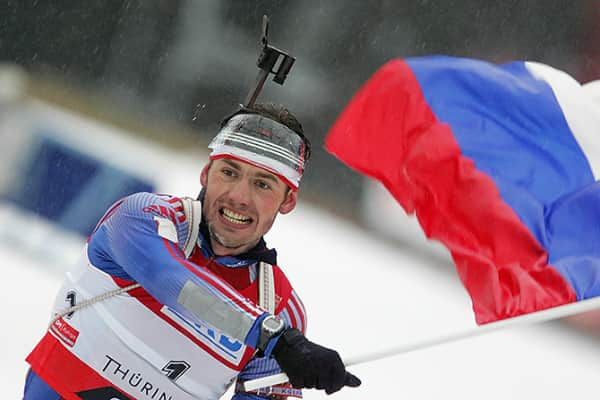Азарян, Эдуард Альбертович. Эдуард альбертович азарян
Азарян Эдуард Альбертович — Энциклопедия фонда «Хайазг»
Дополните информацию о персоне
| Азарян Эдуард Альбертович | |
| Azaryan Eduard | |
| На английском: | Azaryan Eduard |
| На армянском: | Էդուարդ Ազարյան |
| Дата рождения: | 06.11.1958 |
| Место рождения: | Ереван, Армения |
| Краткая информация:Гимнаст | |
Родился 6 ноября 1958 в г. Ереване.
С 1992 - в США, занимался тренерской работой.
Достижения
- победитель Кубка мира в упражнениях на брусьях (1978)
- серебряный призер чемпионата мира в командном первенстве (1978)
- абсолютный чемпион СССР (1979)
- чемпион СССР в вольных упражнениях (1979)
- серебряный призер чемпионата СССР в упражнениях на кольцах (1979)
- чемпион СССР в опорных прыжках (1980)
- чемпион Олимпийских игр в командном первенстве (1980)
- заслуженный мастер спорта по спортивной гимнастике
Изображения
-

-
Альберт и Эдуард Азаряны
-
Эдуард Азарян и Лиза Грайровна Азарян
-
Эдуард Азарян с женой и родителями
-

YouTube
Армянские спортсмены – Эдуард Азарян <video>http://www.youtube.com/watch?v=1A2LokKLq4A</video>
Разное
- Мать: Лиза Азарян, 1934 года рождения, заслуженный тренер Армении по спортивной гимнастике. Отец: Альберт Азарян, 1929 года рождения, двукратный чемпион мира (1954, 1958) и олимпийских игр (1954, 1958) по спортивной гимнастике. Жена: Азарян Марина, 1962 года рождения, менеджер в гимнастическом центре мужа в Алисо Виехо (Калифорния). Дети: сын Альберт (1982), дочь Альбина (1986).
- Фото, публикацию «Азарян – сын Азаряна» прислал К.К. Авакян.
ru.hayazg.info
Азарян, Эдуард Альбертович — Википедия (с комментариями)
Материал из Википедии — свободной энциклопедии
В Википедии есть статьи о других людях с фамилией Азарян.| Эдуард Альбертович Азарян | |
| Награды и медали | |
Эдуард Альбертович Азарян (арм. Էդուարդ Ազարյան; род. 11 апреля[1]1958, Ереван, Армянская ССР) — советский гимнаст, олимпийский чемпион (1980), призёр чемпионата мира (1978), четырёхкратный чемпион СССР. Заслуженный мастер спорта СССР (1980).
Биография
Эдуард Азарян начал заниматься спортивной гимнастикой в раннем детстве под руководством своего отца — трёхкратного олимпийского чемпиона Альберта Азаряна. В 1978 году Эдуард Азарян стал чемпионом СССР в командном многоборье и вошёл в состав сборной СССР. В этом же году стал бронзовым призёром Кубка мира в личном многоборье и серебряным призёром чемпионата мира в командном первенстве. В 1980 году на Олимпийских играх в Москве Э. Азарян в составе сборной СССР завоевал титул олимпийского чемпиона в командном первенстве.
С 1992 года живёт в США. Занимается тренерской деятельностью в созданном им гимнастическом центре в Алисо Виехо (Калифорния).
Напишите отзыв о статье "Азарян, Эдуард Альбертович"
Примечания
Ссылки
- [www.sports-reference.com/olympics/athletes/az/eduard-azaryan-1.html Эдуард Азарян] — олимпийская статистика на сайте Sports-Reference.com (англ.)
- Азарян Эдуард Альбертович — статья из Большой олимпийской энциклопедии (М., 2006)
- [sportgymrus.ru/champions/azaryan-e-duard-al-bertovich/ Эдуард Азарян на сайте Федерации спортивной гимнастики России]
- [www.azariangymnastics.com/history.php Отец и сын Азаряны на сайте гимнастического центре в Алисо Виехо] (англ.)
Отрывок, характеризующий Азарян, Эдуард Альбертович
– Да что же? – Ну я теперь скажу. Ты знаешь, что Соня мой друг, такой друг, что я руку сожгу для нее. Вот посмотри. – Она засучила свой кисейный рукав и показала на своей длинной, худой и нежной ручке под плечом, гораздо выше локтя (в том месте, которое закрыто бывает и бальными платьями) красную метину. – Это я сожгла, чтобы доказать ей любовь. Просто линейку разожгла на огне, да и прижала. Сидя в своей прежней классной комнате, на диване с подушечками на ручках, и глядя в эти отчаянно оживленные глаза Наташи, Ростов опять вошел в тот свой семейный, детский мир, который не имел ни для кого никакого смысла, кроме как для него, но который доставлял ему одни из лучших наслаждений в жизни; и сожжение руки линейкой, для показания любви, показалось ему не бесполезно: он понимал и не удивлялся этому. – Так что же? только? – спросил он. – Ну так дружны, так дружны! Это что, глупости – линейкой; но мы навсегда друзья. Она кого полюбит, так навсегда; а я этого не понимаю, я забуду сейчас. – Ну так что же? – Да, так она любит меня и тебя. – Наташа вдруг покраснела, – ну ты помнишь, перед отъездом… Так она говорит, что ты это всё забудь… Она сказала: я буду любить его всегда, а он пускай будет свободен. Ведь правда, что это отлично, благородно! – Да, да? очень благородно? да? – спрашивала Наташа так серьезно и взволнованно, что видно было, что то, что она говорила теперь, она прежде говорила со слезами. Ростов задумался. – Я ни в чем не беру назад своего слова, – сказал он. – И потом, Соня такая прелесть, что какой же дурак станет отказываться от своего счастия? – Нет, нет, – закричала Наташа. – Мы про это уже с нею говорили. Мы знали, что ты это скажешь. Но это нельзя, потому что, понимаешь, ежели ты так говоришь – считаешь себя связанным словом, то выходит, что она как будто нарочно это сказала. Выходит, что ты всё таки насильно на ней женишься, и выходит совсем не то. Ростов видел, что всё это было хорошо придумано ими. Соня и вчера поразила его своей красотой. Нынче, увидав ее мельком, она ему показалась еще лучше. Она была прелестная 16 тилетняя девочка, очевидно страстно его любящая (в этом он не сомневался ни на минуту). Отчего же ему было не любить ее теперь, и не жениться даже, думал Ростов, но теперь столько еще других радостей и занятий! «Да, они это прекрасно придумали», подумал он, «надо оставаться свободным».Азарян, Эдуард Альбертович - WikiVisually
1. Союз Советских Социалистических Республик – The Soviet Union, officially the Union of Soviet Socialist Republics was a socialist state in Eurasia that existed from 1922 to 1991. It was nominally a union of national republics, but its government. The Soviet Union had its roots in the October Revolution of 1917 and this established the Russian Socialist Federative Soviet Republic and started the Russian Civil War between the revolutionary Reds and the counter-revolutionary Whites. In 1922, the communists were victorious, forming the Soviet Union with the unification of the Russian, Transcaucasian, Ukrainian, following Lenins death in 1924, a collective leadership and a brief power struggle, Joseph Stalin came to power in the mid-1920s. Stalin suppressed all opposition to his rule, committed the state ideology to Marxism–Leninism. As a result, the country underwent a period of rapid industrialization and collectivization which laid the foundation for its victory in World War II and postwar dominance of Eastern Europe. Shortly before World War II, Stalin signed the Molotov–Ribbentrop Pact agreeing to non-aggression with Nazi Germany, in June 1941, the Germans invaded the Soviet Union, opening the largest and bloodiest theater of war in history. Soviet war casualties accounted for the highest proportion of the conflict in the effort of acquiring the upper hand over Axis forces at battles such as Stalingrad. Soviet forces eventually captured Berlin in 1945, the territory overtaken by the Red Army became satellite states of the Eastern Bloc. The Cold War emerged by 1947 as the Soviet bloc confronted the Western states that united in the North Atlantic Treaty Organization in 1949. Following Stalins death in 1953, a period of political and economic liberalization, known as de-Stalinization and Khrushchevs Thaw, the country developed rapidly, as millions of peasants were moved into industrialized cities. The USSR took a lead in the Space Race with Sputnik 1, the first ever satellite, and Vostok 1. In the 1970s, there was a brief détente of relations with the United States, the war drained economic resources and was matched by an escalation of American military aid to Mujahideen fighters. In the mid-1980s, the last Soviet leader, Mikhail Gorbachev, sought to reform and liberalize the economy through his policies of glasnost. The goal was to preserve the Communist Party while reversing the economic stagnation, the Cold War ended during his tenure, and in 1989 Soviet satellite countries in Eastern Europe overthrew their respective communist regimes. This led to the rise of strong nationalist and separatist movements inside the USSR as well, in August 1991, a coup détat was attempted by Communist Party hardliners. It failed, with Russian President Boris Yeltsin playing a role in facing down the coup. On 25 December 1991, Gorbachev resigned and the twelve constituent republics emerged from the dissolution of the Soviet Union as independent post-Soviet states
2. Ереван – Yerevan is the capital and largest city of Armenia as well as one of the worlds oldest continuously inhabited cities. Situated along the Hrazdan River, Yerevan is the administrative, cultural and it has been the capital since 1918, the thirteenth in the history of Armenia, and the seventh located in or around the Ararat plain. The history of Yerevan dates back to the 8th century BC, Erebuni was designed as a great administrative and religious centre, a fully royal capital. During the centuries long Iranian rule over Eastern Armenia that lasted from the early 16th century up to 1828, in 1828, it became part of Imperial Russia alongside the rest of Eastern Armenia which conquered it from Iran through the Russo-Persian War between 1826 and 1828. After World War I, Yerevan became the capital of the First Republic of Armenia as thousands of survivors of the Armenian Genocide in the Ottoman Empire settled in the area, the city expanded rapidly during the 20th century as Armenia became part of the Soviet Union. As of 2011, the population of Yerevan was 1,060,138, according to the official estimate of 2016, the current population of the city is 1,073,700. Yerevan was named the 2012 World Book Capital by UNESCO, Yerevan is an associate member of Eurocities. One theory regarding the origin of Yerevans name is the city was named after the Armenian king, Yervand IV, the last leader of the Orontid Dynasty, and founder of the city of Yervandashat. However, it is likely that the name is derived from the Urartian military fortress of Erebuni. As elements of the Urartian language blended with that of the Armenian one, while looking in the direction of Yerevan, after the ark had landed on Mount Ararat and the flood waters had receded, Noah is believed to have exclaimed, Yerevats. In the late medieval and early periods, when Yerevan was under Turkic and later Persian rule. This name is widely used by Azerbaijanis. The city was known as Erivan under Russian rule during the 19th. The city was renamed back to Yerevan in 1936, up until the mid-1970s the citys name was spelled Erevan, more often than Yerevan, in English sources. The principal symbol of Yerevan is Mount Ararat, which is visible from any area in the capital, the seal of the city is a crowned lion on a pedestal with the inscription Yerevan. The lions head is turned backwards while it holds a scepter using the front leg. The symbol of eternity is on the breast of the lion with a picture of Ararat in the upper part, the emblem is a rectangular shield with a blue border. On 27 September 2004, Yerevan adopted an anthem, Erebuni-Yerevan, written by Paruyr Sevak and it was selected in a competition for a new anthem and new flag that would best represent the city
3. Армянская Советская Социалистическая Республика – It was established in December 1920, when the Soviets took over control of the short-lived First Republic of Armenia and lasted until 1991. On August 23,1990, it was renamed the Republic of Armenia after its sovereignty was declared and its independence was recognized on 26 December 1991 when the Soviet Union ceased to exist. After the dissolution of the Soviet Union, the state of the post-Union Republic of Armenia existed until the adoption of the new constitution in 1995, the modern Armenian Hayastan derives from earlier Armenian Hayk’ and Persian -stān. Hayk’ derives from Old Armenian Haykʿ, traditionally derived from a legendary patriarch named Hayk, aram above was considered to be one of his descendants. Officially, the name of the republic was the Armenian Soviet Socialist Republic as defined by the 1937 and 1978 constitutions. From 1828 with the Treaty of Turkmenchay to the October Revolution in 1917, Eastern Armenia was part of the Russian Empire, after the October Revolution, Bolshevik leader Vladimir Lenins government announced that minorities in the empire could pursue a course of self-determination. Following the collapse of the empire, in May 1918 Armenia, a number of Armenians joined the advancing 11th Soviet Red Army. The medieval Armenian capital of Ani, as well as the icon of the Armenian people Mount Ararat, were located in the ceded area. Additionally, Joseph Stalin, then acting Commissar for Nationalities, granted the areas of Nakhchivan, the republic began under the name the Socialist Soviet Republic of Armenia in 1920. From March 12,1922 to December 5,1936, Armenia was a part of the Transcaucasian SFSR together with the Georgian SSR, the Red Army, which was campaigning in Georgia at the time, returned to suppress the revolt and drove its leaders out of Armenia. With the introduction of the New Economic Policy, Armenians began to enjoy a period of relative stability, life under the Soviet rule proved to be a soothing balm in contrast to the turbulent final years of the Ottoman Empire. The Armenians received medicine, food, as well as other provisions from the central government, the situation was difficult for the Armenian Apostolic Church, however, which became a regular target of criticism in educational books and in the media and struggled greatly under Communism. After the death of Vladimir Lenin in January 1924, there was a power struggle in the Soviet Union. Armenian society and its economy were changed by Stalin and his fellow Moscow policymakers, in 1936, the TSFSR was dissolved under Stalins orders and the socialist republics of Armenia, Azerbaijan, and Georgia were established instead. For the Armenian people, conditions grew worse under Stalins rule, in a period of twenty-five years, Armenia was industrialized and educated under strictly prescribed conditions, and nationalism was harshly suppressed. Stalin took several measures in persecuting the Armenian Church, already weakened by the Armenian Genocide, in the 1920s, the private property of the church was confiscated and priests were harassed. Soviet assaults against the Armenian Church accelerated under Stalin, beginning in 1929, in 1932, Khoren Muradpekyan became known as Khoren I and assumed the title of His Holiness the Catholicos. However, in the late 1930s, the Soviets renewed their attacks against the Church and this culminated in the murder of Khoren in 1938 as part of the Great Purge, and the closing of the Catholicosate of Echmiatsin on August 4,1938
4. Летние Олимпийские игры – The Summer Olympic Games or the Games of the Olympiad, first held in 1896, is an international multi-sport event that is hosted by a different city every four years. The most recent Olympics were held in Rio de Janeiro, Brazil, the International Olympic Committee organizes the games and oversees the host citys preparations. In each Olympic event, gold medals are awarded for first place, silver medals are awarded for second place, and bronze medals are awarded for third, the Winter Olympic Games were created due to the success of the Summer Olympics. The Olympics have increased in scope from a 42-event competition with fewer than 250 male competitors from 14 nations in 1896 to 302 events with 10,768 competitors from 204 nations in 2012, eighteen countries have hosted the Summer Olympics. The United States has hosted four Summer Olympics, more than any other nation, four cities have hosted two Summer Olympics, Athens, Paris, Los Angeles, and Tokyo. Tokyo is the first city outside of the Western world to host the Summer Olympics multiple times, asia has hosted the Summer Olympics four times in Japan, South Korea, and China. The only Summer Olympics held in the Southern Hemisphere have been in Australia, the 2016 Games are the first Summer Olympics to be held in South America and the first to be held during the local winter season. Africa has yet to host a Summer Olympics, only five countries—Greece, Australia, France, Great Britain, and Switzerland—have been represented at every Summer Olympic Games. The only country to have won at least one medal at every Summer Olympic Games is Great Britain. The United States leads the medal table. Qualification rules for each of the Olympic sports are set by the International Sports Federations that governs that sports international competition, for individual sports, competitors typically qualify through attaining a certain place in a major international event or on the IFs ranking list. There is a rule that maximum three individual athletes may represent each nation per competition. Nations most often qualify teams for team sports through continental qualifying tournaments, each nation may be represented by no more than one team per competition a team is two people in some sports. The United States has hosted four Summer Olympic Games, more than any other nation, the United Kingdom hosted the 2012 Olympic Games, its third Summer Olympic Games, in its capital London, making London the first city to host the Summer Olympic Games three times. Australia, France, Germany, Greece, and Japan have all hosted the Summer Olympic Games twice. Other countries that have hosted the Summer Olympics are Belgium, Brazil, China, Canada, Finland, Italy, Mexico, Netherlands, South Korea, Spain, the Soviet Union, asia has hosted the Summer Olympics three times and will host again in 2020. In 2016, Rio de Janeiro hosted the first Summer Olympics in South America, three cities have hosted two Summer Olympic Games, Los Angeles, Paris, and Athens. Stockholm has hosted events at two Summer Olympic Games, having hosted the games in 1912 and the events at the 1956 Summer Olympics—which they are usually listed as jointly hosting
5. Летние Олимпийские игры 1980 – The 1980 Summer Olympics, officially known as the Games of the XXII Olympiad, was an international multi-sport event held in Moscow, Soviet Union, in present-day Russia. The 1980 Games were the first Olympic Games to be staged in Eastern Europe and they were also the first Olympic Games to be held in a socialist country, and the only Summer Games to be held in such a country until 2008 in Beijing, China. These were the final Olympic Games under the IOC Presidency of Michael Morris and this prompted the Soviet-led boycott of the 1984 Summer Olympics. The only two cities to bid for the 1980 Summer Olympics were Moscow and Los Angeles, the choice between them was made on 23 October 1974 in the 75th IOC Session in Vienna, Austria. Los Angeles would eventually host the 1984 Summer Olympics, eighty nations were represented at the Moscow Games – the smallest number since 1956. Six nations made their first Olympic appearance in 1980, Angola, Botswana, Jordan, Laos, Mozambique, cyprus made its debut at the Summer Olympics, but had appeared earlier at the 1980 Winter Olympics in Lake Placid, New York. Sri Lanka competed for the first time under its new name, Benin had competed previously as Dahomey and Zimbabwe competed for the first time under that name. The Soviet invasion spurred Jimmy Carter to issue an ultimatum on January 20,1980,65 countries and regions invited did not take part in the 1980 Olympics. Many of these followed the United States boycott initiative, while others cited economic reasons for not coming, iran, under Ayatollah Khomeini hostile to both superpowers, boycotted when the Islamic Conference condemned the invasion. Many of the boycotting nations participated instead in the Liberty Bell Classic, also known as the Olympic Boycott Games, in Philadelphia. However, the nations that did compete had won 71 percent of all medals, competitors from three countries – New Zealand, Portugal, and Spain – competed under the flags of their respective National Olympic Committees. Some of these teams that marched under other than their national flags were depleted by boycotts by individual athletes. The impact of the boycott was mixed, some events, such as field hockey and equestrian sports, were hard hit, while others such as boxing, judo, rowing, swimming, track and field and weightlifting had more participants than in 1976. Athletes from 25 countries won Olympic gold and competitors from 36 countries became Olympic medalists, Italy won four times more gold medals than they won in Montreal and France multiplied its gold medal tally by three. Romania won more medals than it had at any previous Olympics. In terms of medals, the Moscow Olympics was Irelands most successful games since Melbourne 1956. The same was true for Great Britain, third World athletes qualified for more events and took more medals than they did at any previous Olympics. 21 percent of the competitors were women – a higher percentage than at any previous Olympics, There were 203 events – more than at any previous Olympics
wikivisually.com
| СССР | |||||||||||||
| 11 апреля 19581958-04-11 58 лет | |||||||||||||
| Ереван, Армянская ССР, СССР | |||||||||||||
Награды и медали
| |||||||||||||
www.turkaramamotoru.com







